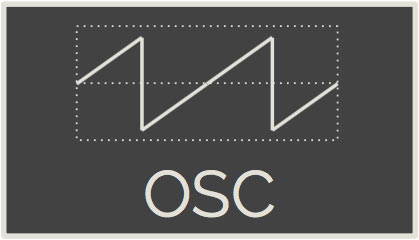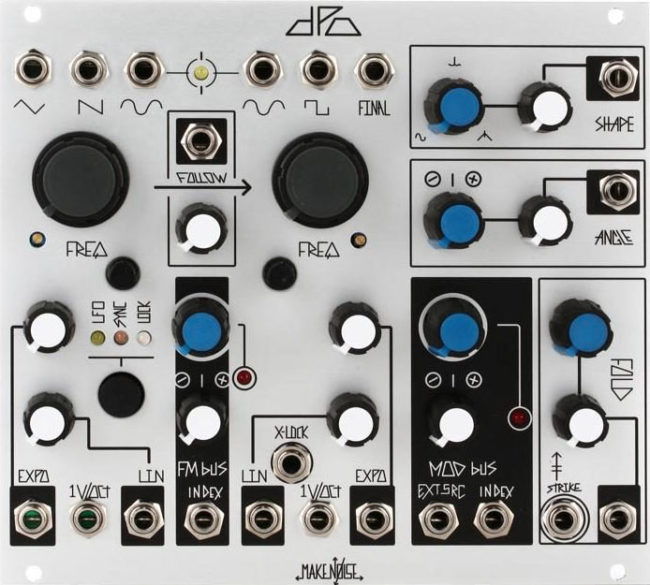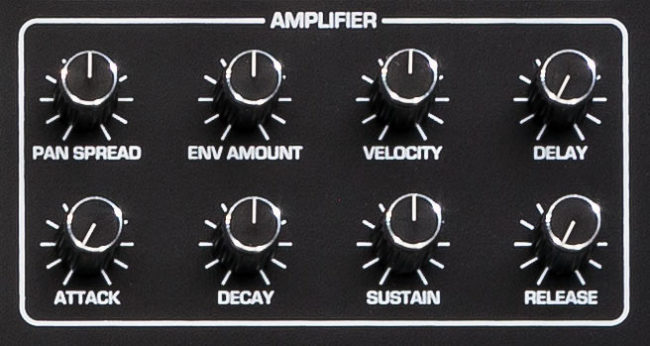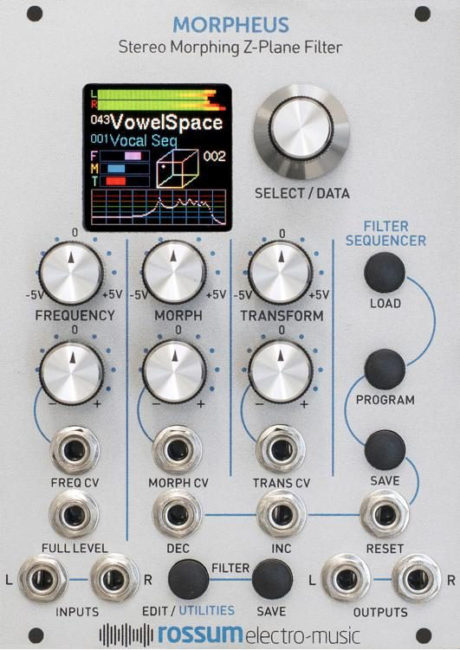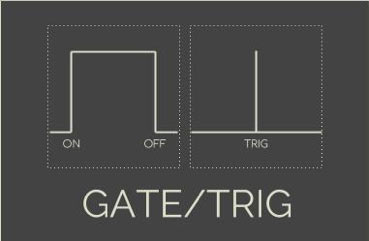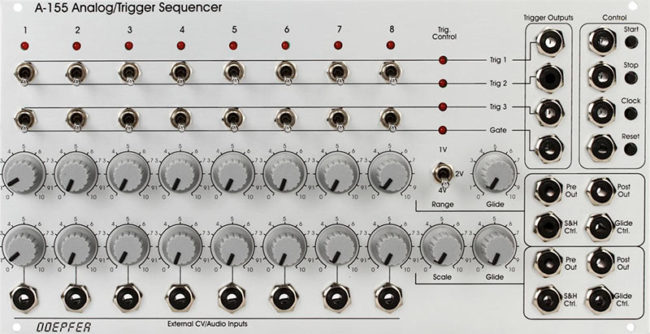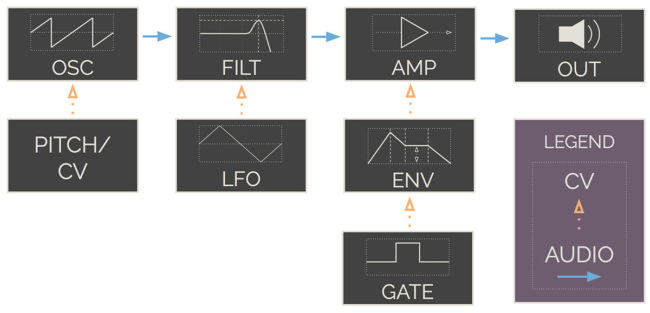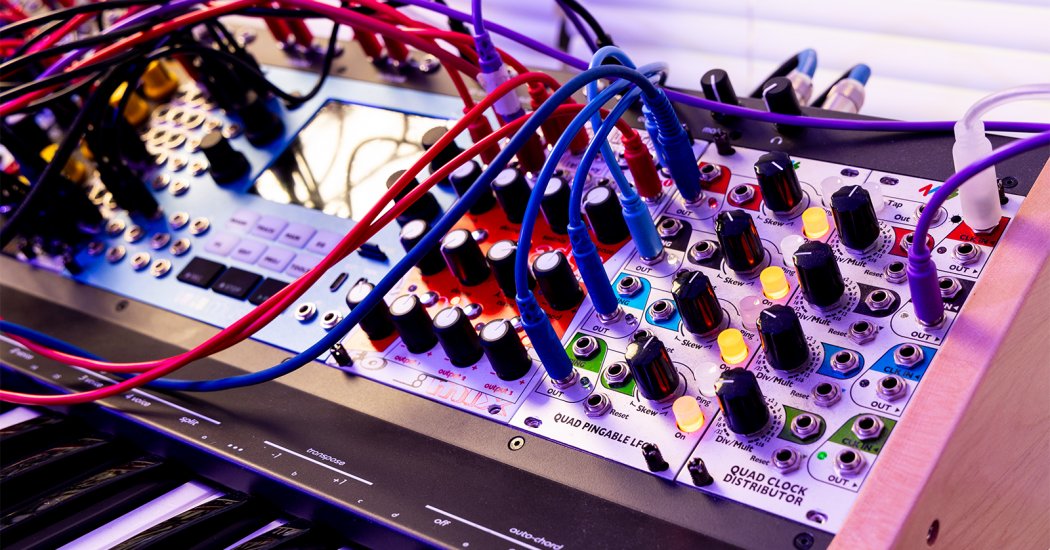
Synthesis is all around us. Synthesizers have become so commonplace in music that we often don’t even realize that we’re hearing them, and the concepts that drive synthesis have permeated every other field of music technology over the past 50 years.
Even so, the basic concepts of synthesis can sometimes be a little hazy. With the current renaissance of modular synthesis, we as musicians can find ourselves in a do-it-yourself world that’s both exciting and confusing; there are so many creative possibilities, but there are also many ways to lose hours of creative time to technical confusion.
If you ever end up second-guessing yourself while building synth patches, then read on. If you just want to brush up or get another perspective on synthesis, then read on. The following paragraphs will walk you through the core concepts of synthesis in a clear and straightforward way, with audio and pictorial examples that should help to cement your understanding of synthesis, whether you’re a total neophyte or a synthesis expert.
Subtractive Synthesis
Before I go on, I do want to make one point: the type of synthesis we’re dissecting here is subtractive synthesis. Subtractive synthesis is the most commonly used category of synthesis, and it’s defined as a method of sound synthesis in which partials of an audio signal (often one rich in harmonics) are attenuated by a filter to alter the timbre of the sound. This is the type of synthesis you see employed in analog, analog-modeling, and wavetable synths, and concepts of subtractive synthesis are present in FM, granular, and sample-based synthesis, as well.
Control Voltage
One other term I need to cover before I dive in is control voltage, or CV. Control voltage is, more or less, the internal language of analog synthesizers. This voltage does not represent audio but controls different elements of a synthesizer that create audio. For instance, the keys on an analog synth keyboard send different CV values to the oscillator in order to change the oscillator’s pitch.
I am going to make this a stripped-down, practical guide rather than an in-depth guide that is steeped in theory. Let’s start by examining the most common modules found in an analog synthesizer. In the case of synthesizer keyboards or all-in-one synthesizer units, these individual modules are all built into the synthesizer and are already connected to one another in a sensible order. In the case of modular synthesizers, like the popular Eurorack modular synths you may be familiar with, these modules are all separate pieces of hardware that you patch together with external cables. Okay — let’s dig in.
Pro tip: If you want to learn more about any term in this article, then bookmark our glossary. This resource is loaded with lots of answers and great information.
Synthesizer Building Blocks
Oscillator
If anything is the heart of a synthesizer, then it’s the oscillator. It produces a raw, unfiltered sound wave. In a garden-variety analog synthesizer, an oscillator will generate a saw wave, square wave, sine wave, triangle wave, or noise. In digital synthesizers, the core of the oscillator can be a wavetable or even a recorded sample. The sound sample below is a saw wave — the way you would hear it if you directly tapped the audio output of an analog oscillator.
Note that it just keeps going. Forever. The behavior of vintage analog synths, and synths that emulate vintage analog synths, is that the oscillator runs continuously.
In a synthesizer, the pitch of the oscillator is modified by a control voltage generated by a sequencer or keyboard. Here’s what that might sound like:
But pitch CV doesn’t give us any separation between notes. That’s fine for a moment, but listening to an oscillator that just doesn’t stop would get tiring pretty quickly. That’s why we need an . . .
Amplifier
Every synthesizer has an amplifier, or, more accurately, a variety of amplifiers. Often seen abbreviated as VCA (voltage-controlled amplifier) and DCA (digitally controlled amplifier), the amplifiers are the components that determine exactly how much signal from the oscillator gets passed on to the next part of the synthesizer.
The name “amplifier” is a bit misleading and confusing, though. Technically speaking, an amplifier is part of a circuit that boosts signal, but in synthesizers, the amplifier actually attenuates, or reduces, any signal coming through it. Got that?
In most analog and analog-modeling synthesizers, each oscillator is fed into an amplifier that keeps the oscillator signal completely attenuated until the amplifier is stimulated by an incoming control voltage. That way, we only hear the oscillator when the amplifier is activated somehow. That’s how we get separation between notes rather than a constant tone.
Generally speaking, synthesizers have a keyboard that generates a gate signal when a key is pressed, which triggers an envelope, which then stimulates the amplifier to allow signal to pass through. Here’s what that sounds like — if you were to tap the output of an amplifier that is responding to a gate signal generated by a keyboard or a sequencer:
It’s probably worth noting that different synthesizers give the user different levels of control over the amplifier. Minimally, you can control the amplifier by shaping the envelope that affects the signal level, which changes the attack time (A), decay time (D), sustain level (S), and release time (R) in a section often labeled as Amp EG (amplifier envelope generator). Envelope controls are typically labeled as ADSR.
Filter
In the context of a synthesizer, a filter is a module that removes certain frequencies from the audio signal, much like an equalizer on a stereo or a recording console. The most commonly found filter types on an analog synthesizer are lowpass (LP) filters, which filter out high frequencies and let low frequencies pass (hence the name), and highpass (HP) filters, which filter out low frequencies and allow high frequencies to pass. You may also see bandpass (BP) and all-pass filters on certain synths.
Filters are used to alter the timbre or tone of a sound. Minimally, a synthesizer will give you control over the cutoff frequency of the filter (the frequency at which the filter starts cutting off) and the resonance of the filter, which is a boost or bump that occurs at the cutoff frequency.
It may make sense if you just hear it. Here’s the sound of a synth being played with the filter completely disengaged:
Here’s a sample with a lowpass filter engaged with zero resonance, and I’ll move the filter’s cutoff frequency up and down to highlight the effect:
Here’s that exact same passage but with the filter’s resonance control turned almost all the way to max:
And here’s a sample with a lowpass filter engaged with an envelope generator altering the cutoff frequency. You will hear the filter resonance increase as the sample goes on, resulting in a squelchy or squeaky sound:
Envelope (ADSR)
We’ve been throwing the term envelope around in this article a bit, and it bears a little more explanation.
An envelope generator is a module that alters incoming voltage over time. This can be used in a lot of ways, such as to open up an amplifier circuit in order to give a volume contour to a sound. Listen to the difference between an oscillator going through an amplifier circuit that’s simply being opened and closed by a gate signal . . .
. . . compared with an oscillator going through an amplifier circuit that’s being opened and closed by an envelope generator that’s reacting to that same gate signal.
Most synthesizers have multiple envelope generators — possibly as few as one that controls the volume of each note over time and one that controls the filter and the frequency content of each note. However, some synthesizers, specifically modular synthesizers, allow you to patch envelope generators into practically anything.
When it comes to envelopes, they come in many shapes and sizes, but most frequently, you’ll see envelopes represented by the letters ADSR when they appear on synthesizers.
A: Attack. This is the time it takes for the envelope to reach its maximum value after the note begins its attack. This audio sample begins with the filter envelope attack value set to 0ms, and the attack will increase to about 150ms over time and then fall back down to zero.
D: Decay. This is the time it takes for the envelope to fall from its maximum value to the sustain level. The decay stage does a lot to define whether a sound is snappy and transient or long and flowing. In this sample, the filter envelope begins with a snappy decay value of 150ms, goes up to three seconds, and backs down again to almost zero.
S: Sustain. This one is tricky because it’s the only part of the envelope that’s a measure of amplitude rather than time. The sustain level is the value at which the envelope rests after the decay stage until the key is released. This is often expressed as a percentage of its maximum value. When it comes to amplitude and filter envelopes, patches emulating plucked or struck instruments like drums or mallets would have zero sustain. Bowed instruments and brass and woodwind sounds, on the other hand, would have a higher sustain value.
In the next audio sample, you’ll hear a synth patch in which the filter envelope has a snappy, short attack and a pretty short decay of 150ms, and I will move the sustain value from 0% at the beginning to 100% and back down.
R: Release. Release is the time it takes for the envelope to fall back to zero after the key is released (or, technically, after the gate signal ends). Think of an acoustic guitar — this instrument would have a very sharp attack, a short decay stage, and zero sustain. But it would have a long release when strummed as the strings slowly lose energy and volume. On the other hand, a marimba would have a much shorter release time. An aggressive modern synth bass or lead patch might have essentially zero release.
In this last sample of the envelope section, I will mess around with release. Here’s a patch that has a very short attack, a medium (300ms) decay value, and a sustain set at 70%. I will start with zero release, raise it up to 20 seconds briefly, and then go back to zero.
Key Concept: Gate & Trig
These terms often throw people off. What the heck is a gate? Why do we need it? To oversimplify it a little bit, the gate signal tells the synthesizer when a note starts and when it ends. Here’s an example: a keyboard can generate a gate signal, which begins when the key is pressed and ends when the key is released. A sequencer could generate gate signals, and it could have various ways of controlling the length of the signal (and thus the length of the note, provided that the gate signal is patched to the gate input of an envelope generator that’s connected to the CV input of an amplifier).
So, what the heck does it mean when we see “trig” on a synthesizer? That stands for “trigger.” A trigger resembles a gate signal, but instead of having an element of time to it, it’s instantaneous. Put another way, a gate opens at one time and closes later, for instance, when you take your hand off a key. A trigger signal is an instantaneous pulse. For this reason, a trigger signal is seen frequently on analog sequencers designed to drive drum machines and isn’t as suitable for melodic instruments.
The final primary module you’ll find in an analog synthesizer is a low-frequency oscillator (LFO). An LFO generates control voltage, not sound. Like a normal oscillator, the voltage from an LFO oscillates, or goes up and down, but typically, it’s too low to actually be perceived as pitch. Technically, the definition of an LFO is an oscillator that generates frequencies lower than 20Hz.
Note: Modules such as envelope generators and LFOs that create control voltage but not audio are called modulators.
LFOs are frequently used to control pitch, filter cutoff frequency, pulse width, amplitude, and a variety of other parameters in order to add movement to a sound over time.
To tie this all together, I’ll leave you with a simple block diagram showing a synthesizer with one oscillator, one amplifier, one envelope (controlling the amplifier), a lowpass filter, and an LFO modulating the cutoff frequency of the filter. This should give a solid visual reference for all the concepts we’re talking about.
And here’s what that sounds like:
Ready to Explore Fundamental Synthesis?
Hopefully, you found some helpful information in this basic rundown of synthesis concepts. To the uninitiated, this may seem like a lot of information, but I promise you that there’s a whole lot more where that came from. The limitless flexibility of synthesizers is one of the things that makes them so appealing, and the huge variety of synthesizer modules available today allows every individual to create his or her own unique instrument — and then add, subtract, and modify modules endlessly. It’s a lot of fun, and the sonic potential is infinite. If you haven’t already gotten your feet wet with synthesizers, then why not dive in now?
If you have any questions about synthesizers, then don’t hesitate to reach out to your Sweetwater Sales Engineer at (800) 222-4700.


